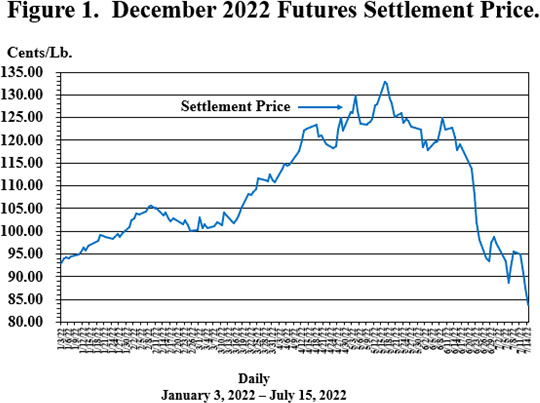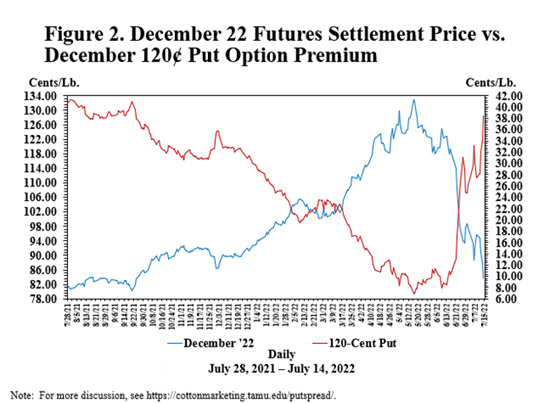ICE cotton futures took a nosedive in June. The size and steepness of the decline defies belief (see Figure 1). Since the May 16 settlement of 132.96 cents per pound, the December contract fell over 49 cents (through July 14). That is 49 cents in two months. In the last 40 years, there have only been six December cotton contracts with more than that total level of change, measuring from the contract high to the contract low.

This current price decline also defies normal explanation. The operational reason for the price decline is speculative selling, which has occurred, although not to the degree that I would expect to cause a 49-cent decline. The rationale for speculative selling makes only partial sense. It is attributed to reduced demand from expectations of looming economic recession.
I understand how previously high cotton prices might reduce the quantity demanded – that’s basic economics. I also understand how high gas and food prices might cause households to cut back on discretionary semi-durables like clothing and household textiles. But I did not expect these sorts of influences this early in the season, especially given the drought-induced uncertainty about the size of the U.S. crop. The latter would ordinarily be a source of speculative buying.
From a marketing standpoint, the cotton price decline represents a huge lost opportunity for growers who produce bales in 2022. Hopefully, they had already sold a portion of their expected production at the higher prices, and now will have to dollar-cost-average with lower prices. Or perhaps some may have taken advantage of the insurance opportunity that existed with December put options back when futures prices were high. The decline in December ‘22 ICE futures is associated with rising options premiums for a given strike price (the red line in Figure 2).

There is, of course, the possibility of the return to a weather market with upside price volatility. If this happens, there will likely be selling pressure as growers step up to sell unsold production.
For additional thoughts on these and other cotton marketing topics, please visit my weekly on-line newsletter at http://agrilife.org/cottonmarketing/.


